Two weeks ago, I traveled to the Persian Gulf, and made the transit through the Strait of Hormuz to the Arabian Sea. My host was the U.S. Navy, and the ride through the Strait was aboard the mighty USS Carl Vinson, an aircraft carrier that is part of two carrier strike groups onpatrol in the region. This was my 8th visit to an aircraft carrier, and doing an 'arrested landing' never loses its thrill. The C2 Greyhound came in at 140 mph, its tailhook connecting with one of the steel wires stretched across the deck. Imagine landing any plane. Then imagine that the runway appears from above to be the size of a postage stamp and is located in the middle of a churning sea. Oh, and often it's dark out and raining. The movie Top Gun did not exaggerate the abilities or cool demeanor of naval aviators. But this was no movie set and the threat the Navy faces is unfortunately all too real.
Here's an important point, though: While the war drums may be beating in Jerusalem and in some corners of Washington, there's no war mongering among the crew members I spoke to. Military men and women are the last people who want conflict. But if a regional war breaks out and the U.S. is drawn in, the 5,000 men and women of the Vinson will be the tip of the spear for any U.S. response.
Surrounded by a destroyer, a missile cruiser and several Seahawk helicopters, we were hardly inconspicuous as we transited the Strait. And that is the point. The Navy wants to send the message to an increasingly bellicose Iran that closing down the Strait -- whether via mines or missile attacks -- will not be tolerated. Hormuz is one of the most vital waterways in the world... 20 percent of the world's oil sails through here, en route to Asia and the West. Any disruption, even temporary, could send oil prices soaring.
Admiral Thomas Shannon is the commander of the carrier strike group. From the glass bridge of the ship, Shannon and his team keep an eye on the unmanned aerial vehicle and the airplane that Iran has dispatched to monitor us. Shannon told me, "I would hope... that most would realize that a closure of the Strait of Hormuz would not stand. And, working together with a lot of friends, we'd get it open and we'd get that oil flowin' again."
The oil must flow and making sure it flows has frequently put the United States in a bind between its strategic needs and its democratic ideals. That's what we found in Bahrain, a tiny island Kingdom off the coast of Saudi Arabia that the Navy's Fifth Fleet calls home. TheUnited States considers the Sunni royal family there to be a 'major non-NATO ally," and the Navy base in Bahrain provides a safe harbor from which to keep an eye on Iran. For years, the United States has sold Bahrain helicopters, humvees, and lots of teargas. But there is turmoilin the Kingdom. The Shiite majority has taken to the streets, for more than a year, in a violent and under-reported uprising. Riding the wave of the Arab Spring uprisings in Tunisia and Egypt, the Shia took to the streets in February, 2011 demanding more freedoms, including the right to elect their own Prime Minister. The crackdown was instantaneous and brutal. But the Shia keep demonstrating, and have frequently been attacked with teargas stamped "Made in the USA."
(Our cameraman attended a funeral that turned into a clash with Bahrain authorities. Watch an interview with Mark Laganga about his experience below.)
Whose side is the United States on? The editor of Bahrain's only independent and non-sectarian newspaper, Al-Wasat, is a man named Manoor Al-Jamri. Al Jamri put it succinctly: "I think the issue of the flow of oil, stability of the Strait of Hormuz, is the predominant concern for the United States, for the Pentagon... policy makers. There's oil that must flow. Everything else is details, and has to be... dealt with at a lower level."
Al Jamri has tried to be an intermediary between the Sunni rulers and the Shia majority. But his voice of moderation is being drowned out by radicalized young men who have been shot at and brutally attacked for a year. The United States' short term goal may very well be to keep a lid on things and throw its weight behind in the King. But observers say that in the long term, unless the U.S. uses its leverage to negotiate for reforms, we run the real risk of driving an increasingly restive Shia population into the very arms of the one country we fear the most right now... Shia-dominated Iran.
